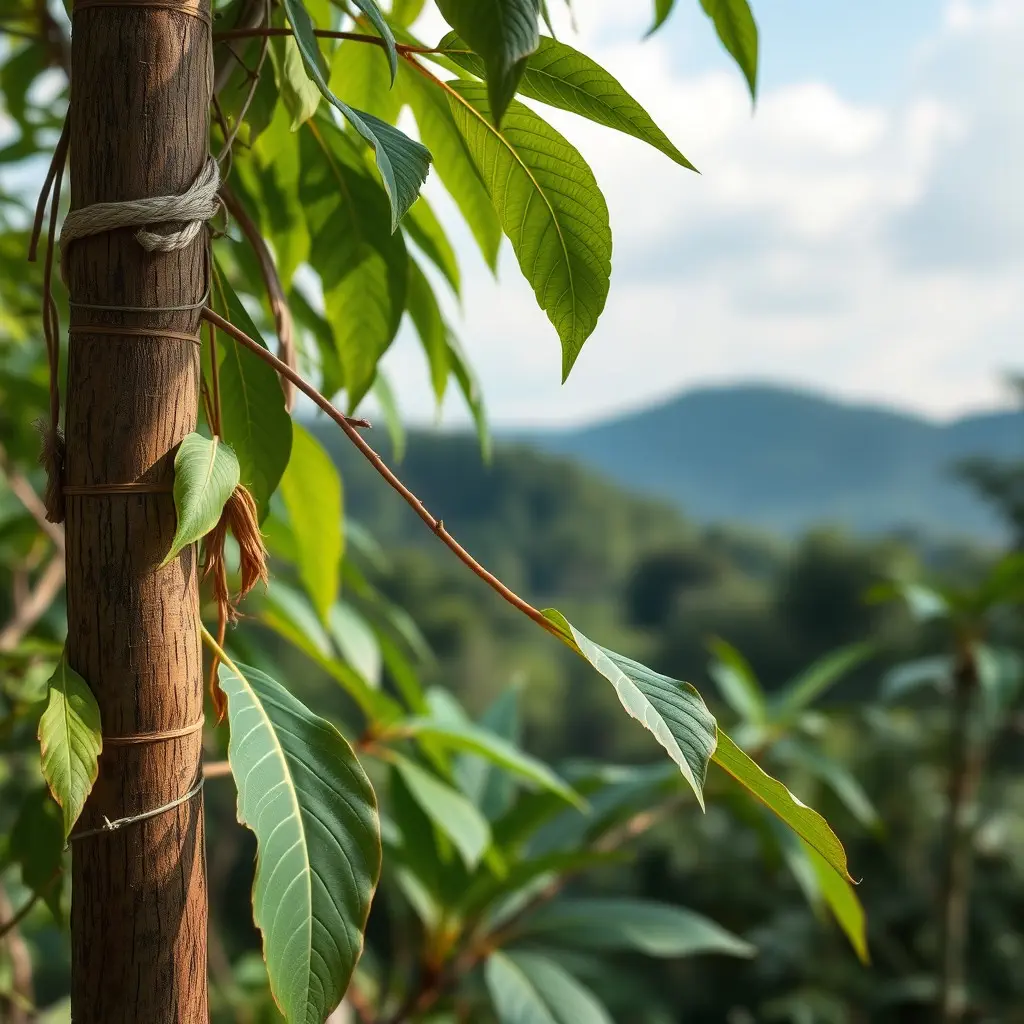Malaysian Kratom, derived from the Mitragyna speciosa plant, has been recognized for its anti-inflammatory properties, historically used in Southeast Asian traditional medicine. Scientific research indicates that its effectiveness in alleviating inflammation may be linked to key alkaloids like mitragynine and 7-hydroxymitragynine, which modulate immune responses by inhibiting pro-inflammatory cytokines and enzymes. These compounds are believed to work by suppressing the NF-κB transcription factor, potentially benefiting conditions such as arthritis. However, due to the variability in alkaloid content and individual differences in metabolism, it is crucial for users to start with a low dose, typically 2 to 5 grams of dried leaves, and adjust according to personal experience and effectiveness. Safety and efficacy can only be fully assessed through human clinical trials, which are necessary to understand the full scope of Malaysian Kratom's anti-inflammatory potential. Prospective users should consult healthcare providers, especially those with existing health issues or on other medications, to avoid adverse interactions and ensure safe use.
explore the therapeutic potential of Malaysian Kratom as a natural approach to inflammation reduction. This article delves into the anti-inflammatory mechanisms at play within this unique herbal supplement, offering insights into its integration into a health regimen with careful dosage and safety considerations. Discover how Malaysian Kratom may offer a promising avenue for those seeking relief from inflammation without relying solely on pharmaceuticals.
- Unraveling the Potential of Malaysian Kratom in Mitigating Inflammation
- Understanding the Mechanisms Behind Malaysian Kratom's Anti-Inflammatory Properties
- Integrating Malaysian Kratom into an Anti-Inflammatory Regimen: Dosage, Precautions, and Considerations
Unraveling the Potential of Malaysian Kratom in Mitigating Inflammation

Malaysian Kratom, derived from the leaves of Mitragyna speciosa, has been the subject of growing interest due to its potential anti-inflammatory properties. Traditionally used in Southeast Asian cultures for its various medicinal qualities, modern research is beginning to uncover the mechanisms behind kratom’s ability to mitigate inflammation. Studies have indicated that certain alkaloids present in Malaysian Kratom, such as mitragynine and 7-hydroxymitragynine, may play a significant role in modulating immune responses associated with inflammatory conditions. Preclinical evidence suggests that these compounds can inhibit pro-inflammatory cytokines and enzymes, potentially offering a natural approach to reducing inflammation without the side effects often seen with conventional treatments. The potential of Malaysian Kratom as a therapeutic option for inflammation is promising; however, further human clinical trials are necessary to fully understand its efficacy and safety profile. As research progresses, the role of Malaysian Kratom in managing various inflammatory diseases could become an integral part of holistic health strategies.
Understanding the Mechanisms Behind Malaysian Kratom's Anti-Inflammatory Properties

Malaysian Kratom, derived from the leaves of Mitragyna speciosa, has been traditionally used in Southeast Asia for its diverse therapeutic properties. Recent scientific studies have begun to elucidate the mechanisms behind its notable anti-inflammatory effects. The primary active compounds in Malaysian Kratom are alkaloids such as mitragynine and 7-hydroxymitragynine, which have been observed to modulate the body’s inflammatory response through complex pathways. These alkaloids interact with various receptors and enzymes within the immune system, leading to a reduction in pro-inflammatory cytokines and chemokines that are pivotal in initiating and sustaining inflammation. The anti-inflammatory action of Malaysian Kratom appears to be mediated through the suppression of nuclear factor kappa B (NF-κB), a key transcription factor that regulates the expression of genes involved in immune responses and inflammation. By inhibiting NF-κB activation, Malaysian Kratom helps to prevent the overproduction of inflammatory mediators, offering potential therapeutic benefits for conditions characterized by excessive inflammation, such as arthritis and other inflammatory diseases. Further research is necessary to fully understand the extent and specificity of its anti-inflammatory effects, as well as to determine the optimal dosing for therapeutic use.
Integrating Malaysian Kratom into an Anti-Inflammatory Regimen: Dosage, Precautions, and Considerations

Malaysian Kratom, derived from the Mitragyna speciosa tree, has been traditionally used in South East Asia for its medicinal properties, including anti-inflammatory effects. Recent scientific interest has shed light on the potential of this natural supplement to reduce inflammation. Integrating Malaysian Kratom into an anti-inflammatory regimen requires careful dosage and consideration of individual health factors, as well as precautions due to its potency.
When considering the use of Malaysian Kratom for inflammation reduction, it is crucial to adhere to a dosage protocol tailored to one’s unique physiology. The optimal dose can vary significantly among individuals, influenced by factors like body mass and personal tolerance. Typically, a moderate starting point might be 2 to 5 grams of dried Kratom leaf, which can be adjusted up or down based on individual response. However, due to the variability in leaf alkaloid concentrations and individual metabolism, consistent monitoring of effects is necessary when titrating the dose for maximum benefit without exceeding tolerable levels. Precautions should also be taken to avoid overconsumption, which could lead to adverse effects or undesired outcomes. It is imperative to consult with a healthcare provider before incorporating Malaysian Kratom into any health regimen, especially for those with pre-existing conditions or individuals taking other medications. Additionally, attention must be given to potential interactions with supplements or prescription drugs, and close monitoring of overall well-being is recommended when using this natural supplement as part of an anti-inflammatory strategy.
In conclusion, the exploration of Malaysian Kratom’s potential in inflammation reduction presents a promising avenue for complementary therapy. The mechanisms underlying its anti-inflammatory properties, as elucidated in this article, offer insight into its use within an integrated treatment plan. Careful consideration of dosage and adherence to precautions are paramount when incorporating Malaysian Kratom into one’s health regimen. While further research is necessary to fully understand its effects and interactions, the current findings support the notion that this botanical supplement may offer significant benefits for those managing inflammatory conditions. Prospective patients should consult healthcare professionals before adding Malaysian Kratom to their health regimen, ensuring a safe and effective approach to inflammation management.






